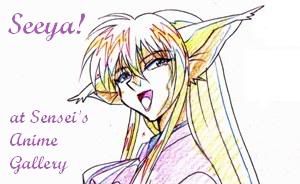Worth noting: strictly speaking the genga (foundation drawing) is the base sketch that's used by the studio to plan out the actual animation of the scene. So it has an official status that many of the other kinds of drawings that are
called genga don't have.
One of the things that confuses the issue is when dealers refer to "rough genga," which could be lots of things, ranging from a senior animator's guidelines to the genga artist on how to execute the scene to doodles and practice sketches that could fall in anywhere in the process. I like the term "genzu" for these "practice drawings," and with CGI series these have come up more often than before. These drawings don't have any official standing in the process and are just the contents of an animator's circular file.
But Kata is right: a genga will
always have a sequence number, because these numbers are used on the timing sheet as the senior animator decides how many inbetweeners the scene will need and how the timing of them will go. (I've found cases where the animator sped up or slowed down the number of frames per second for effect). If you didn't have these numbers, the animator wouldn't know how to do this. But the sequence numbers will normally be written beside the figures, and usually the eyes, mouth, etc. will all be together on one sketch. In the dougas these moving parts will be put on different layers.
Dougas will be simpler and neater (I've seen some with white-out to clean them up) because their job is to be photocopied onto the back of acetate sheets (or scanned into digital files) and then colored. That's why the sequence number is put up in the corner and out of the way. They are "paint-by-numbers" drawings.
When you find notations anyplace else on a douga, it's almost always a checker's note pointing out where the cel was mispainted and needs to be corrected, as in
this case. When I looked at the cel at that spot, I found that the highlights in Yue's wings had had to be repainted on the
front of the cel, a very unusual strategy.
BTW, I'm still looking for the case I recall where the A layer was on top and I'm starting to think that duotrouble and klet might be right: A = bottom layer might in fact be the industry standard, and the case I encountered was a dealer's reconstruction of a scene.

